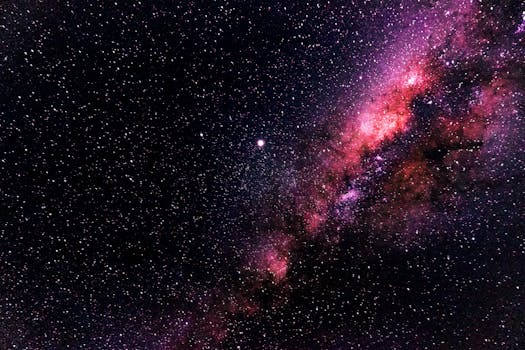
“
Beyond the Milky Way: Imagining New Worlds and Possibilities
Introduction to the Cosmos
As we gaze up at the night sky, we are reminded of the vast expanse of space that lies beyond our planet. The Milky Way, our home galaxy, is just one of billions of galaxies in the observable universe. With the help of advanced telescopes and space probes, we have been able to explore and study the cosmos in unprecedented detail. In this article, we will delve into the mysteries of the universe, exploring the latest findings in astronomy and the potential for life beyond our galaxy.
Exploring the Galaxy and Beyond
The Milky Way is a barred spiral galaxy, consisting of hundreds of billions of stars, as well as various types of interstellar gas and dust. At the center of the galaxy lies a supermassive black hole, with a mass of approximately four million times that of our sun. The galaxy is thought to have formed around 13.6 billion years ago, during the early days of the universe. Over time, the galaxy has undergone numerous mergers and interactions with other galaxies, shaping its structure and composition.
Beyond the Milky Way, there are many other galaxies, each with its own unique characteristics and features. Some galaxies are similar to our own, while others are quite different, with unusual shapes and structures. The universe is also home to various types of celestial objects, including stars, planets, asteroids, comets, and black holes. The study of these objects has helped us to better understand the formation and evolution of the universe, a topic explored in Galaxies of Dreams: How Imagination Transcends the Night Sky.
Imagining New Worlds and Possibilities
As we explore the universe, we are continually reminded of the vastness and complexity of creation. The discovery of exoplanets, which are planets that orbit stars other than the sun, has opened up new possibilities for the search for life beyond Earth. Some of these exoplanets are believed to be located in the habitable zones of their respective stars, where conditions are suitable for life as we know it. The search for life beyond our galaxy is an exciting and ongoing area of research, with scientists using a variety of methods to detect biosignatures, such as the presence of oxygen or methane in the atmospheres of exoplanets. This topic is further discussed in The Infinite Universe of Imagination: Beyond Celestial Boundaries.
The possibility of life beyond our galaxy raises many interesting questions and possibilities. For example, could there be other forms of life that are entirely different from what we see on Earth? Might there be intelligent life forms that have developed their own civilizations and technologies? These are questions that have puzzled scientists and philosophers for centuries, and ones that continue to inspire new generations of explorers and researchers, as highlighted in Soaring Through the Cosmos: The Power of Imagination Beyond the Stars.
Takeaways
- The Milky Way is just one of billions of galaxies in the observable universe.
- The universe is vast and complex, with many different types of celestial objects and phenomena.
- The search for life beyond our galaxy is an ongoing area of research, with scientists using a variety of methods to detect biosignatures.
- The possibility of life beyond our galaxy raises many interesting questions and possibilities, including the potential for other forms of life and intelligent civilizations.



